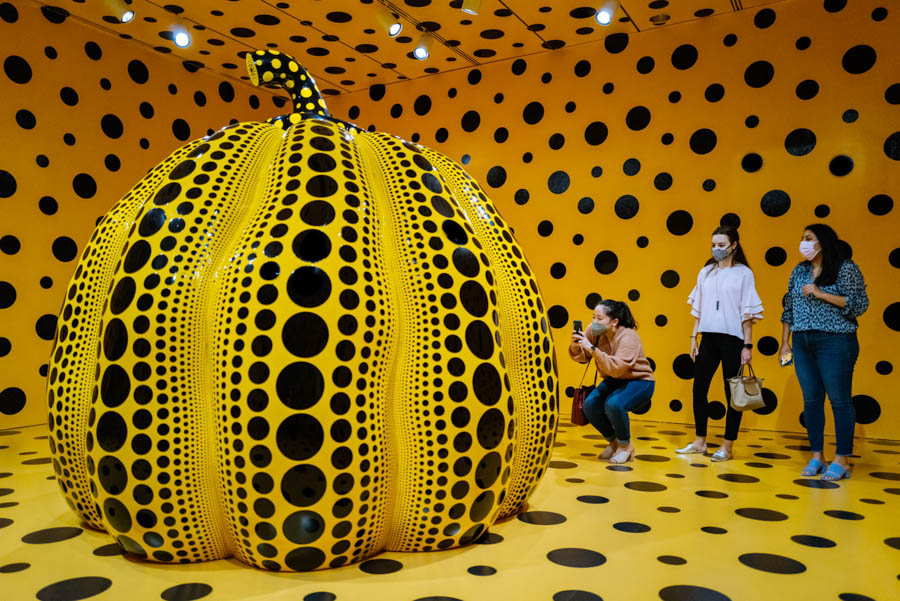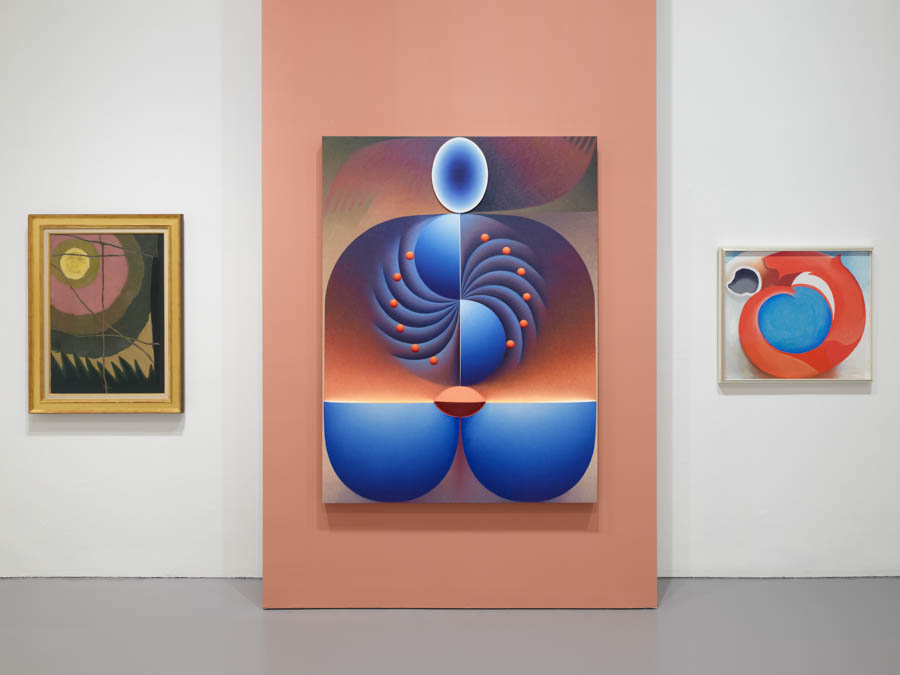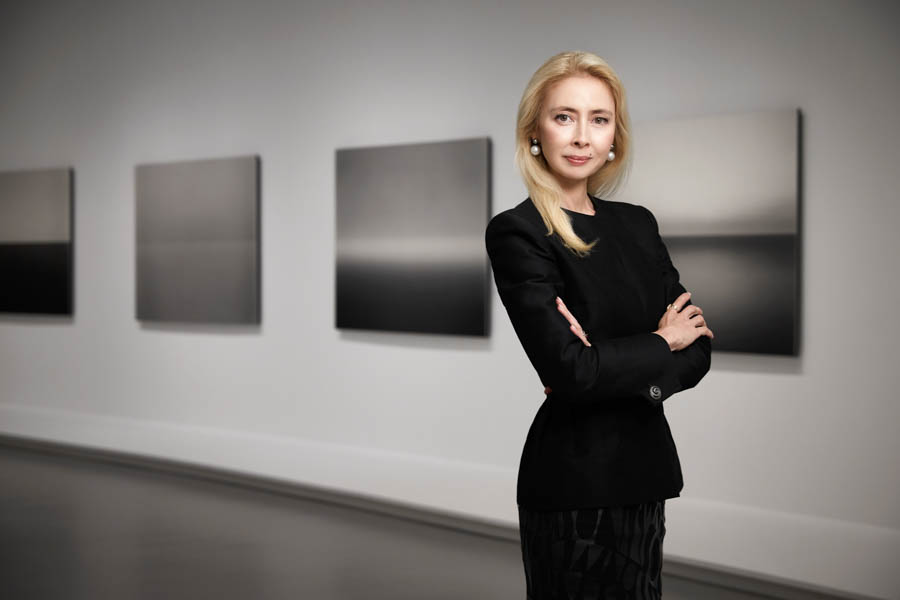The Marie Selby Botanical Gardens hosted Dr. Melissa Chiu, the director of the Smithsonian’s Hirshhorn Museum and Sculpture Garden in Washington, D.C. when she paid a visit to Sarasota this March. Through her work at this national museum of modern and contemporary art, Chiu has doubled the Hirshhorn's attendance to one million visitors a year, supported technological innovations like the Hirshhorn Eye app and launched the Infinity Mirror Rooms exhibition by Japanese artist Yayoi Kusama. In honor of Selby’s Yayoi Kusama: A Letter to Georgia O’Keeffe exhibit, Chiu spoke at Selby, bringing her expertise and enthusiasm to the community.
What first sparked your interest in art? DR. Melissa Chiu: I grew up in the far north of Australia, and I first became interested in art through a family friend who was very immersed in the art world in Sydney. She greatly encouraged me to make and study art, as did my parents. That’s kind of where it first started, and at a very young age, six or seven years old. That’s what first got me interested, and then discovering what it was to curate and work on a museum came much later in high school. I was most interested in art history, and I realized there aren’t that many applications for art history in terms of jobs. One of the main places is museums, so I really liked the idea of being able to be with art and figure out how to best present art through storytelling and art historical narratives. That was how I came to understand what being a curator is. My first step was when I graduated from high school, and I studied art history and criticism at University of Western Sydney and then I started to have internships at museums and places like that.
What attracted you to this role at the Hirshhorn? I was very attracted to the museum because of its exceptional collection. We are fortunate to have one of the best collections of 20th-century and 21st-century art. Some very strong holdings are in artists like Francis Bacon, Alberto Giacometti, Josef Albers, Henry Moore and Willem De Kooning. From that, I also understood it to be a national museum with a mission to connect as many people across the nation through their visits to Washington, D.C. with our national collection. It was really the mission and the collection that attracted me to the museum.
Can you speak about one or two of the exhibits at the Hirshhorn that have impacted visitors? I think one of the exhibitions that’s probably had the largest impact is an exhibition we put together here at the Hirshhorn. It attracted over 150,000 visitors. That was our Kusama exhibition. It focused on her Infinity Mirror Rooms way back in 2017. That exhibition went on a national tour from Cleveland to Seattle, Los Angeles and Atlanta. That had a huge impact on the number of visitors, but also in terms of people’s perceptions of what contemporary art or current art could be. It was all-immersive; it was in some ways also something that made people take a moment in their lives to think about what was around them when they were in the Infinity Mirror Rooms. I often think of that exhibition as significant to Hirschhorn history but also to visitors who came.

Describe the renovations to the Sculpture Garden. How will they transform visitors’ experiences? The renovations to the Sculpture Garden have begun already; in fact, it’s a construction zone right now and has an anticipated opening in 2026, in time for the 250th anniversary of the Declaration of Independence. The idea behind the renovations and design is by Hiroshi Sugimoto, an artist best known as a photographer but who has done remarkable architectural projects recently, especially in Japan. He reconceived our Sculpture Garden with the brief that we gave him to extend all of what we do inside the museum outside in the Sculpture Garden, and that enables us to show 50 percent more of our modern collection, including Henry Moore, Lucio Fontana, Barbara Hepworth and to also have a space for performance art, performances and our public programs like lectures which we now have in the new design. Finally, (it will have) a commissioning space, a large, open field where we can commission new art by rising artists and others, so we’re very excited about all the flexibility the new Sculpture Garden will provide. In terms of the visitor experience, it will be very different from today. It will be a real place for an encounter with artworks from the 20th and 21st centuries.
Why is technology like the Hirshhorn Eye important in connecting visitors to the artists? We asked ourselves ‘How could we make an artwork more easily understood by a visitor who might not have an art history degree?’ I think we came to the answer that it might well be through the voice of the artist, the person behind the artwork. Hirshhorn Eye provides this instantaneous video where you scan the artwork with your phone, and a video of the artist talking about the work comes up. For us, that was a way of humanizing the artwork, meaning that a person made this, with all the characteristics of humanity. It also allowed us to provide more information than the wall text. It’s available in our collection book; you can scan the images in the book. It’s a great way to provide more information, availability and connections to artists, which is our mission.
Why is it important to view/experience modern and contemporary art? Some would say that if you want to understand what’s going on around us now, artists provide a way of understanding the world in real-time. Artwork also provides us with different perspectives and worldviews that may allow us to question our own thinking and beliefs. I think it’s both a challenge; art can be challenging, but in a way that makes us think, rather than beating us up.
What are some exciting programs at the Hirshhorn? The program that I think people will be interested in is our 50th-anniversary show. It’s called Revolutions: Art from the Hirshhorn Collection, 1860–1960, and it’s a new presentation of works from our collection, dating from 1860 to 1960. That allows for an understanding of how our idea of modern art evolved, and it begins with a wonderful portrait of a lady from the 1800s by John Singer Sargent and then contrasts that with a current-day portrait by Amoako Boafo, a well-known artist from Africa. We’re looking at how that history is connected to today and how contemporary art can inform a different view of those historical works. I think people will enjoy the juxtapositions between the work, and there are lots of treasures that we haven’t shown in a long, long time.

You spoke at Selby in honor of the Yayoi Kusama: A Letter to Georgia O’Keeffe exhibit and have featured her work at the Hirshhorn. Why is Kusama’s work so popular and enduring? Kusama is an artist who was active in Japan, first in the early stages of her life and then in the New York art scene in the 1950s and 1960s. Then she moved (back) to Japan. I think it’s because of that arc that her artwork has been overlooked until fairly recently. The appraisal of her work is based on a number of factors. One of which is that she is something of an outlier. She was not part of a movement, even though she was close to artists like Joseph Cornell and Donald Judd, and she was clearly a part of the New York art scene, but she wasn’t part of a movement. I think because of that, she wasn’t included in what we would call an art historical cannon. I think today we’re very interested in artists who are outliers, rather than being part of a movement. There’s a whole reappraisal going on, and I think for a younger generation, there’s a greater understanding of what it means to be completely independent and an individual.
If you look at the younger generation, they seek out differences in social media. It’s about that sense of individuality, and I think people can understand that about Kusama. Visitors can also understand and relate to her Infinity Mirrors Rooms in a way that they perhaps couldn’t understand as fully way back in 1965 when she created her first one, which we have on display here and forms part of the Hirshhorn collection. There are a number of reasons why she’s become such an important figure, but I do think it’s because of her longevity and the fact that she was making work that only now seems to be kind of relatable for a broader audience.
Where do you see the future of art going? I’m not sure about the long-term future, but I would say that it’s very curious right now that there’s so much interest in the art world in the handmade and crafted. Whether it’s in clay, weaving or textiles, these are all things that humans create, at a moment when so much of the discussion (is) about future societies, about AI and machines creating things for the very first time. It is a very interesting counterpoint between the artwork that people are most interested in at the moment, which seems very handmade and the fact that we are all grappling with the influence of technology on our lives. It’s almost the human condition to seek out something that’s the opposite of what’s occurring in real life. SRQ To learn more about the Hirshhorn Museum and Sculpture Garden, visit hirshhorn.si.edu.










